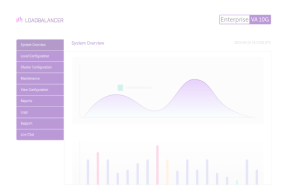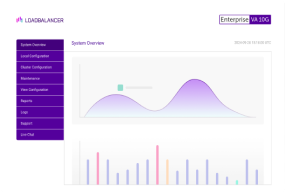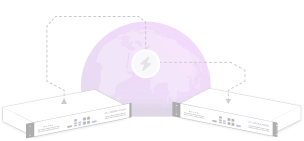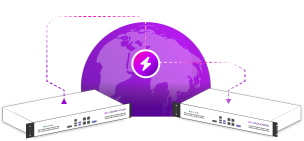Comparing load balancers is simple, but not easy
Load balancers can help you achieve peak performance, and zero downtime.
But which one is right for you?
Let’s help you choose, the best option — for you
F5 Networks
F5 is the market leader in application delivery. Although they have grown to provide a wide range of products, their BIG-IP load balancer is still amongst their core offerings.
Citrix NetScaler
Citrix ADC, now NetScaler (again!), has always been seen as second best in the market. However, if you already use Citrix enterprise solutions for your applications. They are an excellent choice.
Loadbalancer.org
What about Loadbalancer? Well we’re a bit different. We provide clever, not complex ADCs and load balancers that can easily handle anything that Citrix or F5 can do, just better.
Three reasons to choose Loadbalancer.org
How much bandwidth do you really need?
| Size | Model | Price inc. 24/7 support | Throughput | SSL (TPS) | WAF | GSLB |
|---|---|---|---|---|---|---|
| Small | Loadbalancer Enterprise Prime | $7,370 | Up to 4Gbps | 10,306 | ||
| Citrix MPX 5900 |
$44,000 | 1-10 Gbps* (subscription) |
8,000 | |||
| Medium | Loadbalancer Enterprise Flex | $14,720 | Up to 48Gbps | 19,584 | ||
| F5 BIG-IP r2600 | $27,900 | 10 Gbps | 5,000 | |||
| Citrix MPX 8920 | $60,000 | 20 Gbps | 22,000 | |||
| Large | Loadbalancer Enterprise Max | $30,900 | Up to 90Gbps | 30,059 | ||
| Citrix MPX-15000 | $80,00 | 20-120 Gbps* (subscription) | 24,000 | |||
| F5 BIG-IP r5600 | $125,000 | 95 Gbps | 30,000 |
| Size | Model | Price inc. 24/7 support | Throughput | SSL (TPS) | WAF | GSLB |
|---|---|---|---|---|---|---|
| Small | Loadbalancer VA Basic | $2,950 | Up to 400Mbps | 400 | ||
| Citrix VPX-200 | $18,000 | 0.2 Gbps | 500 | |||
| Medium | Loadbalancer VA Prime | $5,890 | Up to 4Gbps | Unrestricted | ||
| BIG-IP VE-1G | $37,500 | 1 Gbps | ||||
| Citrix VPX-3000 | $43,900 | 3 Gbps | 500 | |||
| Large | Loadbalancer VA Max | $12,380 | Unrestricted | Unrestricted | ||
| BIG-IP VE-10G | $77,000 | 10 Gbps | 3,400 | |||
| Citrix VPX-3000 | $43,900 | 3 Gbps | 500 |
Why are people moving from F5 & Citrix to Loadbalancer?
Ease of use
Our intuitive Enterprise appliance is clever, not complex, making it easy to optimize even the most complex environments.
Seamless migration
Reduce risk and migrate faster with our seamless migration process, meaning you could be up and running in just a couple of days or weeks.
Value
One of the most affordable solutions on the market, our appliance will save you thousands, and could be up to half the price of your existing F5 or Citrix ADC.
Transparency
Our prices aren’t the only thing we’re transparent about. We don’t do hidden add-ons, and we don’t End-of-Life our appliance.
Start your free trial now.
Go on, get the fully functional Loadbalancer Enterprise ADC, right now.
It only takes a few minutes, so what have you got to lose?
And while you’re at it, why not test our amazing support team?
They’re ready to answer your tricky questions 24/7.
Or if you prefer, book a meeting and chat to one of our friendly sales team.

Ask our experts for help, you won’t regret it.
Here’s what to do
- Fill out the form with as much detail as possible
- Rest assured we will help you quickly
Here’s what you get
- One of our team will reach out to you
- Finding you the right expert
- To get to the heart of the problem
- And help with your journey towards zero downtime
Expert insights, from people who care
Want some more information on the technical specifications?
The load balancer (ADC) market is very mature, so differences between the main vendors are relatively small. Therefore, for the most part the main comparison to be made is price versus throughput, although it is worth checking metrics such as SSL transactions and connections, as some suppliers do artificially throttle these.
Throughput is the amount of data, usually referred to as traffic, being (or capable of being) transmitted and received ‘over the network’ by a device such as a load balancer or server, per second. You may also be able to monitor the throughput of a VIP but this will always be limited by the capabilities of the device it exists on.
Typically the maximum throughput of a load balancer is determined by the maximum throughput (or speed) of all of its network interfaces combined. Our Enterprise Prime hardware appliance has four interfaces with a speed of 1Gbps so its maximum possible throughput is 4Gb.
However, you should also be aware that many load balancer vendors place artificial license restrictions on their devices, meaning that although the network interfaces are capable of higher throughput the appliance is still throttled for commercial reasons.
As an additional note, protocol overheads mean you’re only likely to actually achieve around 80% of the maximum theoretical throughput of an interface. It’s also worth keeping in mind that cloud based host virtual network interface throughput may be limited by factors other than the reported speed of an interface. So while the operating system may be presented with a virtual 1Gb network interface, its actual maximum possible throughput may be far lower.
SSL/TLS Transactions Per Second. Establishing SSL/TLS security for a new connection is a CPU intensive operation and the number of new connections that can be handled at any one time is limited by the power of a device’s CPU(s). The key size used has a significant impact (using contemporary ECC keys, which are much smaller, will result in the highest TPS). Once a connection is secured and established things become far less taxing. A device can support hundreds of thousands or even millions of active SSL/TLS secured connections, but its capacity to establish new ones is limited by this figure.
HTTP RPS is number of incoming HTTP Requests Per Second that can be processed by a load balancer or server. As small as they usually are in comparison to responses, requests contain a lot of information that must be parsed to ensure they are valid, do not present a security threat and to make load balancing decisions based upon any number of components within the request. For this reason, the maximum number of RPS is significantly lower than the maximum number of connections a load balancer supports.
A connection is, typically, an established communication channel between a client (a user using a web browser for instance) and a server or site, although in reality this is almost always a load balancer. Where web based traffic is concerned, a client browser will typically open multiple, parallel connections to the same site (Chrome will open up to six for instance) in order to improve performance — one user rarely equals one connection.
Concurrent connections: this is the number of established connections between one or more users and a single server or load balancer. As we know the most common browser could open up to six connections to a site.

























